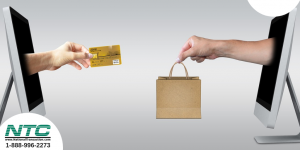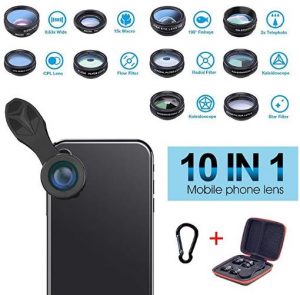Category: Small Business Improvement
November 11th, 2024 by Admin
In honor of Veteran’s day, we wanted to say more than thank you. We want to provide you with some value and hope this article is of help. Here are resources for veterans opening a business.

During the making of this post, we found that one of the best places to start was the US Department of Veteran Affairs. They provide quite a well thought-out a page of resources for veterans. But we wanted to dig in more and post the ones we saw that could serve our readers best.
If you are still in the idea phase and are not sure if entrepreneurship would be the best thing for you and your idea, we invite you to check out the US Small Business Administration website. Here you will be able to see and learn how to prepare a business plan and even how to figure out how much money you need to get your dream started. The SBA is a useful (and free) tool to get started and to keep handy as your business grows.
VBOC: The Veterans Business Outreach Center is a program dedicated to helping transitioning service members, veterans and military spouses looking to start, purchase, or grow a business. The program is located nationwide, and you can find your nearest VBOC center here.
OSDBU’s Vets First Verification Program: Once your business is set up, you can apply for the Vet’s First Verification Program. This program will verify your business and will give you priority in competing for federal government contracts
Once your business is up and running and you get your business verification, you can attend events like the NVSBE to bring approved businesses in touch with federal government contracts.
VA SBA Loans: For many businesses, the only way to start or grow is to get a business loan. Luckily, the SBA offers loan options that can help Veterans. The SBA also offers competitive rates and a plethora of resources to ensure your business succeeds, so we recommend you taking the time to check it out.

There are many resources out there for veterans and business owners alike, but we think this can be a great start to help you look into options as a Veteran and business owner.
We want to take this time to thank you for your service.
Posted in Small Business Improvement Tagged with: business, business loans, business owner, business tips, Department of Veterans Affairs, entrepreneur, loans, small business, small business owner, US, Veteran's Day
October 24th, 2024 by Admin
Having a product or service based business can be easily manageable when you are pricing your business correctly. But can it be done? Before processing, consider pricing.

What does that mean? Before you pick your payment processing service, consider pricing them correctly. Pricing can be tricky sometimes. If you charge too much, you might have a harder time selling your product but if you charge too little people might not honestly see the value of what you have to offer.
There are a certain number of things you need to consider that can make your life easier when it comes to pricing. Knowing your market can, by far, be the most important thing of all. Without knowing your market, you cannot correctly know whether your product or prices will be good.
Knowing your market can greatly positively impact your business. It can help you figure out anything from pricing to branding and including what you can do to grow the business. Start by building up your perfect customer or “avatar” write what your ideal client would enjoy, dislike, what age, gender (if applicable), and even area where they would live.

Once you have this, it will give you a better idea on how to price your services. Consider this:
You sell handmade bags. Although it does not take you too long now to make the bags, the materials are costly, and you need to maximize its use. Your ideal client would not hesitate in buying them, is into fashion, and although anyone can buy them, you have seen many girls ages 18-25 falling in love with them as you walk around with your bag.
Knowing the age group, you know how and where to market and can figure out how much are they willing to pay for your bags. You can also research how much are you competitors charging and see if you price matches, is under-priced or over-priced based on this research.
The next thing you need after figuring out the age and market is your materials. How much do you spend per product? You would need to consider if the price covers the cost of making it and gives you profit.
Having all of these factors will help you price your items correctly so that you are on your way to business success. Once all of these are set up and taken care of, then it is time to set up your account with National Transaction to have a personable and secure payment processing service to start earning on your business.
Posted in Small Business Improvement Tagged with: accept payment, b2b business, business, business cards, card payment system, credit card, entrepreneur, fort lauderdale, NAtional transanction, payment processing, retail, services
October 14th, 2024 by Admin
Marketing is an essential element for your business’ success, and we are here to give some simple tips to help you market beyond flyers and brochures.

Create a Promotion or Discount Offer: If you are starting up or your business has slowed down, creating an offer or promotion can bring in some new business to you. Be sure is an offer that truly brings value to your customers and something that does not entirely undervalue your services either.
Creating a promotion or discount offer can help those who are undecided, to make a decision and try-out your services so they can see and test what you have to bring to the table.

Attend Networking Events: We all know this, but not many do it. People are needed for business, so what a better way to get customers than to attend a networking event.
Better yet, a networking event can bring a plethora of ideas. By only talking to others about what they do and who they are, you can realize how you can best serve your audience and also create long-lasting relationships.

Write Guest Posts: Chances are, that if you are in business, you have a certain amount of experience in some topic. What a better way to show your knowledge than to write about it!
While you can start your blog (which we recommend), you can also add value by going to other, perhaps more popular blogs and share your expertise there. Medium is an excellent site for this, and there are plenty of other blogs out there that are looking for people like you to share their two cents and bring value to their audience.

Host a Training: Following on sharing your expertise, what a better way than to host a training about what you do! Sharing some expert tips and giving others the power to do what you do can bring clients to you.
Sharing your expertise can give people an idea and sense of how passionate you are about what you do and how well you know your subject. By doing this, many can realize that instead of a do-it-yourself approach, it is best they hire your services. At a minimum, hosting training will bring in value to those around which can help with word of mouth.

Use Social Media: Lastly, but not any less important, social media is a big way to market yourself. All of these topics above can benefit and be used as part of your social media campaign.
You can connect with your audience faster and constantly with social media. You can use to promote your blogs, your training, your promotions and even to continue to communicate with those whom you have connected at a networking event.
The best part about social media is that you can get a quicker response about how you are sharing your message and if people find value in it. It can also help you learn about your audience and how that audience reacts to you.
There are many more ways to market your business, but we think these five can give you a great head start and help you grow your business today. We would love to hear from you about how these have helped your business succeed.
Posted in Small Business Improvement Tagged with: blog, blogger, blogging, business, entreprenreur, expert, Facebook, facebook ads, Instagram, marketing, networking, promotion, social media, social networking, training
September 26th, 2024 by Admin

Start-ups, online business and just about any business starts somewhere right? Not every business starts with a hefty amount of money and not all can afford it all. Let’s be honest, even if you did, it wouldn’t hurt getting a few things for free at the beginning.
Here are some incredibly easy (and cheap) tools to get you started:
1. SCORE: The plethora of training and resources on this website is just what any entrepreneur needs. You can also get paired up with an experienced business owner to be your mentor. Best of all it is a free service.
2. Grammarly: Writing the perfect e-mail or proposal can be a lot of pressure. Grammarly makes it simple to ensure you sound like you and your grammar is simply perfect!
3. Pixabay: If you need good quality pictures and graphics and your budget are not existent, Pixabay is the way to go. The pictures are completely free to use at any time. But if you want to help the cause, you can donate or as they say: “buy a cup of coffee” for them.
4. NTCePay.com: Take the hassle out of invoicing and getting paid. Simply sign up for NTC ePay and voila! The fees are low in comparison to other payment processing companies and the services are always personable.
5. Google Drive: If you are an Android user, Google can definitely be your friend. Not only to store documents and pictures but to write up all those important conversations. Goodbye Microsoft, hello Google.
6. TopTracker: Do you work with freelancers or are you one yourself? TopTracker can help you track the time spent on projects and can be an easy tool to help invoice your hours. Best of all, it’s free!
7. Asana: Another great tool to have whether you are a solopreneur or have a team. Asana can help you coordinate all of the work your team does and manage it well. Plus you can keep communication specifically with each project, making it easy for everyone on the team.
8. Canva: An user-friendly tool to help you create graphics and content for your social media and print work. There is no need to learn new software and this can be accessed on your computer and phone. The free version has plenty of tools to get you started.
As you grow your business, some of these tools do have paid versions which will allow you to grow with them without worrying about moving to a new tool.
Posted in Small Business Improvement Tagged with: asana, b2b business, business, business owner, Canva, entrepreneur, free, freelancer, Graphics, National Transaction, ntc, Score pixabay, social media, TopTracker

Merchant account services can help you focus more on your business operations and identify flaws in your business. They can also help you manage your business finances and help you improve operations, while cutting down on costs. Not accepting credit cards can hurt your bottom line. Having a merchant account can help you make more money.
Not accepting credit cards can hurt your bottom line
Businesses that don’t accept credit cards are missing out on a lot of business. Credit cards offer convenience and rewards, and most customers prefer them to cash. Not only does this mean more business, it also protects your business from fraudulent charges. Lastly, by accepting credit cards, you don’t have to worry about handling cash, which makes it less tempting for thieves.
If you have decided not to accept credit cards for your business, it is important to remember that you need to have a merchant account to receive credit card payments. This account holds the money you collect from customers. However, you may have been reluctant to accept credit cards because you think you don’t need them or don’t want the added hassle of accepting them.
Many customers are switching to cashless payments, particularly high-income consumers and people under 45. According to the Federal Reserve’s 2022 Diary of Consumer Payment Choice, cashless payments will account for 57% of all consumer payments in 2021, 55% in 2020, and 53% in 2019. The trend is even more prominent among high-income consumers and those under 45.
Not accepting credit cards can also hurt your business’s bottom line. Instead of storing cash, credit card payments go directly into your bank account and can be integrated with your accounting software. Additionally, the security of holding large amounts of cash is a huge concern, and businesses may lose money if a thief tries to steal the money. Businesses that accept credit cards may also have an established customer base.
If you run a small rural business without access to credit cards, you’re missing out on a lot of customers and profits. It’s estimated that businesses in rural areas are losing billions of dollars every year because of their inability to accept credit cards. This is partly because of poor internet connection or other issues. However, there are affordable credit card processing options available that help businesses accept more customers and boost their profits.
Getting approved for a merchant account
There are many things to consider before getting approved for a merchant account for your business. First of all, you must have the proper documentation to back up your business. This will include financial statements, business bank account information, and routing numbers. Some merchant account providers will also require you to provide a business license.
Having a good credit history is also essential. You should work to improve your credit rating and eliminate any past credit issues. To get your credit report, you can get a copy from TRW or the major credit agencies. If you have any negative items on it, you should ask the company to remove them. By maintaining good credit, you can increase your chances of getting approved for a merchant account for business.
After researching different merchant account providers, you should make an informed decision. Make sure to choose one that offers the right payment services and features for your business. For example, some merchant account providers have specific features for specific industries and specialize in certain types of transactions. You should do some comparison shopping online and get recommendations from people in your industry. You can also try looking for a merchant account provider through a bank. Banks may offer merchant accounts to new business owners, and they are usually more willing to approve them.
When choosing a merchant account provider, it is important to understand that the fees and rates they charge will be deducted from your business funds. It is also important to consider the quality of customer service you receive from your merchant account provider. If you find a company that provides poor customer service, move on to another provider.
Before choosing a merchant account provider, you should compare the fees, hardware costs, customer support, and contract length. The standard merchant account contract is three years, but you should compare terms and penalties before signing a contract. In addition, make sure your prospective processor provides you with clear answers to all your questions, including how long the approval process will take. You should avoid any merchant account provider that makes promises you can’t keep. Get all your paperwork in order.
If you have an online store, a merchant account provider can help you set up the payment processing system. The merchant account provider will need information about your business, and may also need a credit card number to make automatic deposits. Make sure you review the terms and conditions and the PCI data security standard before signing any paperwork.
Choosing a merchant account provider
Choosing a merchant account provider is an important decision for your business. It can have a significant impact on the rate you pay and the quality of service you receive. Choosing the right one can also help you gain a competitive edge. Here are some tips to keep in mind when choosing a merchant account provider.
– Choose a merchant account provider that offers a variety of payment options. Online businesses need a merchant account provider that supports the variety of payment methods you accept. If you only accept cash, you may want to opt for a cashback system. This will reduce the need for clients to make an in-person trip to the ATM and incur additional fees. Alternatively, you may want to choose a provider that offers ACH processing. In either case, it’s important to consider future funding needs.
When choosing a merchant account provider, you should also consider the fees that come with their services. Some merchant account providers may charge monthly minimums. This is not ideal if you plan to only sell items during certain seasons. You should also take into account the annual PCI Compliance Fee and early termination fees. While this may seem like a small fee, they can add up.
Lastly, don’t be afraid to ask questions. Ask about their fees and the kind of processing they offer. A merchant account provider should be able to answer any questions you have. A good account provider should be flexible and responsive to your needs. Your business is different, so you need a service that will be best suited to it.
A merchant account provider’s fees can vary significantly, so it’s important to compare them side-by-side. It’s important to look for a fee structure that is transparent and fair. Lastly, choose a merchant account provider that’s ethical. If you choose an unreliable merchant account provider, you’ll face ongoing account maintenance and other fees that may be unavoidable.
Merchant account providers provide the services that enable businesses to accept credit card payments. They store the money from customers and process it for the business. They also provide services such as PCI compliance and customer service. There are many different types of plans available. You should compare these to determine the best fit for your business.
Setting up a merchant account with low rates and fees
Many merchant services providers offer low rates and free trials, so you don’t have to worry about paying thousands of dollars for a merchant account. These services let you accept credit card payments online and through invoicing. While free accounts may be the most attractive option for new businesses, many established businesses also find lower-cost alternatives.
When applying for a merchant account, you should carefully review the contract with the service provider. Some providers have hidden fees and long-term contracts. They also often charge a cancellation fee if you decide to cancel the account. To ensure that you have the lowest fees and lowest risk, read the terms and conditions and ask questions before signing on the dotted line.
Merchant accounts should be PCI compliant. This means the provider must have strong security measures and protect sensitive customer data. Additionally, a good merchant account provider should offer fast funding options and 24-hour in-house support. You can also choose a provider that offers an all-in-one solution.
A merchant account is a vital part of a business’s infrastructure. It allows it to accept payments by credit cards from customers. After the credit card issuer approves the transaction, the merchant account provider transfers the money to the business’s bank account. This way, the business owner doesn’t have to wait for their customers to receive their money.
Finding a merchant account that is affordable can be difficult, but it can be done. There are many different merchant account providers and a merchant’s needs depend on the type of cards and sales volume. For instance, a flat-rate pricing model may work well for smaller businesses, but for high-volume businesses, a lower-cost option may be much more profitable.
When applying for a merchant account, you must provide all of the necessary information. These include your business’s tax ID number, financial statements, and credit card information. Some providers also require an application fee.
Posted in Best Practices for Merchants, Credit card Processing, Small Business Improvement

February 9th, 2022 by Admin
John Stewart
January 17, 2022
https://www.digitaltransactions.net/trends-like-open-banking-and-bnpl-will-sustain-e-commerces-hot-streak-a-report-says/
Open banking, single-click checkout wallets, and the hot buy now, pay later trend will all help drive e-commerce volume worldwide in the coming five years, predicts Juniper Research in a report released Monday. This momentum is likely to push online sales long after the short-term impetus from the pandemic subsides, Juniper says.
E-commerce volume totaled $4.9 trillion globally in 2021, a figure the United Kingdom-based research firm forecasts will reach $7.5 trillion in 2026, when China will control a 37% share. Wider availability of multiple e-commerce channels, including mobile devices, will propel the overall growth worldwide, Juniper says. But along with the boom in e-commerce will come a corresponding growth in fraud via identity theft, account takeovers, and fraudulent chargebacks, the report warns. China, for example, will account for more than 40% of fraud losses worldwide in 2025, at more than $12 billion, Juniper forecasts.
Open banking is a trend by which fintechs can verify balances in consumers’ accounts and transfer funds to pay for online purchases. As standards bodies work to promulgate standards for this business, e-commerce payment providers “should … partner with specialists in … specific emerging payment areas to keep pace with changing merchant expectations around acceptance types,” the research firm says in its release, referring to digital wallets and crypto as well as open banking.
Open banking has taken on a higher profile in the global payments market with efforts by both of the global card networks to acquire firms that specialize in this area. Visa Inc. has acquired Tink AB, while Mastercard Inc. bought Aiia and Finicity Corp.
Physical goods will continue to dominate e-commerce spending, the report says, accounting for 82% of payment value by 2026. To tap into the trend, Juniper advises, payments providers should support buy now, pay later plans, which allow consumers to split purchases into four equal installments paid over a six-week period at no interest. BNPL is becoming more controversial, however, as the Consumer Financial Protection Bureau has launched an investigation of the option and as reports emerge that consumers with multiple accounts are more likely to miss a payment.
While still a big trend, e-commerce sales in the U.S. market cooled significantly last year as the pandemic effect lost some of its force. Third-quarter sales in 2021 reached $214.6 billion, up 6.6% year-over-year, according to the Census Bureau, which tracks retail sales. That follows an 8.9% rise in the second quarter and three straight quarters with increases of 32% or more. Fourth-quarter 2021 results are not yet available.
Posted in Credit card Processing, Credit Card Reader Terminal, Credit Card Security, Digital Wallet Privacy, e-commerce & m-commerce, Financial Services, Mail Order Telephone Order, Merchant Account Services News Articles, Merchant Services Account, Mobile Payments, Mobile Point of Sale, Point of Sale, Small Business Improvement, Smartphone, Uncategorized, Visa MasterCard American Express Tagged with: banking and e-commerce, e-commerce, e-commerce businesses, e-commerce merchants, e-commerce processor, e-commerce transactions, ecommerce, ecommerce merchant, ecommerce merchants, ecommerce sites, mobile commerce payment, mobile payment, Mobile Payments, mobile processing transactions, mobile transactions, mobile wallet, mobile wallet transactions, mobile wallets, mobile-commerce payments, online transactions, point-of-sale transactions, transaction processing, transactions, wallet

September 24th, 2020 by Admin
With more retailers than ever before embracing e-commerce, the fraud journey is becoming a focus for many. It is clear, though, why retailers have paid more attention to the customer journey. After all, in addition to shaping a customer’s overall experience, a customer’s journey determines whether or not they will make a repeat purchase. Too often, however, when focusing solely on the customer journey, the fraudster’s journey remains overlooked. To bring the fraud journey into focus, we need to understand what it really is and where retailers should be placing their efforts.
Like the customer journey, the fraud journey is the path fraudsters take when interacting with a brand. In the case of the fraud journey, we consider the actions a fraudster takes to commit fraud. Understanding the fraud journey and focusing on the fraudster’s actions will enable online retailers to dramatically reduce fraud conversion rates and ultimately prevent fraud.
It’s not by chance that the customer’s journey and the fraudster’s journey are often mentioned together. In their attempt to satisfy customers while also detecting and preventing fraud, many retailers are faced with an impossible juggling act: Do I prevent fraud or give my customers the experience they want? True, balancing between the two, enabling the paths to co-exist, is challenging, yet it can be achieved. Taking the time to understand the intricacies of the fraud journey can help reduce false positives and cut down on chargebacks.
The True Cost of Chargebacks
Chargebacks. The very word sends shivers down the spine of even the most experienced online retail fraud fighters—with good reason. Chargebacks end up costing retailers in additional fees as well as in customer dissatisfaction and it’s nearly impossible to truly evaluate the cost of chargebacks.
It’s estimated that for every $100 in chargebacks, retailers end up paying $240! But the problem with chargebacks goes far beyond any fees or penalties incurred. The issue with chargebacks is that if a customer gets to the point where they have to request a chargeback, the damage has already been done.
Why Does the Fraud Journey Matter?
Let’s consider the forecast that e-commerce is expected to make up 22 percent of all global retail sales by 2023. Or that it’s predicted that U.S. e-commerce sales will jump 18 percent due to Covid-19. E-commerce sales are at an all-time high, and there are no signs this trend is going to slow down anytime soon. This emphasizes even more the need to focus on the fraud journey. The fraud journey has an impact when building an effective chargeback management strategy and it is directly linked to customer retention and acquisition.
The fraud journey gives one an in-depth understanding of users who could be fraudsters, based on suspicious behavior. Retailers looking to up their fraud prevention and chargeback management game, need to have a clear understanding of the fraud journey. This understanding will make it easy for them to differentiate actions a legitimate user would take, from fraudulent actions. For example, a change of the shipping address upon login indicates a possible fraudulent action. Carefully considering the behavior of a legitimate customer at every stage of the customer journey can help isolate suspicious activities with more accuracy, and thus cut down on false positives.
Fraud Prevention: The Ultimate Juggling Act
Understanding chargebacks and how to prevent them, starts with understanding how retailers approach fraud prevention. In cases where retailers focus on detection and prevention at the payment stage, or even only one part of the payment stage, fraudsters are able to successfully move through their journey undetected until it is too late.
If a fraudster’s activity is detected as suspicious and flagged only at the payment stage, gives an opportunistic fraudster plenty of opportunities to monetize the service by other means before their presence is detected. This could include everything from promo abuse and referral abuse to new account fraud.
That’s exactly why a more advanced fraud prevention and detection approach is required. For example, using technologies such as behavioral biometrics will enable retailers to stop a fraudster long before the payment stage, before any real damage is done, and will help cut down on chargebacks.
Is it really that simple? Retailers are rightfully concerned with the need to ensure that detection of fraud early in the fraud journey, early enough to prevent damage including chargebacks, will introduce as little friction as possible into the customer’s journey. At times it seems retailers can’t win. If they flag an activity as suspicious based on strict rules, they might find themselves with a rise in false positives and possibly disappointed legitimate customers. Other times retailers rely on fraud detection and prevention at the payment stage, ignoring any fraudulent activity, which happens before that, throughout the customer journey. Either way, with fraudulent activities getting more sophisticated, retailers are dealing with a growing number of chargebacks due to fraud.
In-depth understanding of the fraud journey, identifying and monitoring its various touchpoints, will help retailers to reduce fraud and still maintain the balance between customer satisfaction and security.
Proactive Chargeback Management
The common passive-reactive approach to chargeback management is proving to be insufficient as fraudsters are increasingly using tools such as bots and emulators to scale their attacks. Behavioral biometrics-based fraud detection introduces a proactive approach to counter advanced fraud. As opposed to focusing on login or checkout only, and reacting too late, behavioral biometrics focuses on user behavior throughout the entire customer journey, making it easy to identify suspicious and potentially fraudulent behavior at its earliest stage, enabling to stop the fraudster in his tracks, before damage is done.
Adopting advanced technologies like behavioral biometrics will provide retailers with visibility and insight into the entire fraud journey, leading to better, data-driven decision making, pre-transaction prevention and cut down chargebacks.
SecuredTouch is the expert in adaptive fraud detection solutions for online retailers and financial institutions. Using machine learning, the technology continuously analyzes hundreds of behavioral data points to differentiate between human and non-human behaviors, human to device interactions and behavioral anomalies to provide early detection of fraud. The solution identifies sophisticated fraud throughout the customer journey while simultaneously improving the user experience. Businesses benefit from reduced drain on internal resources and increased transaction rates, ultimately leading to an improved bottom line. Today, our award-winning solutions are used by some of the world’s largest retailers and financial institutions.
By Ran Wasserman, CTO, SecuredTouch – Sponsored Content
Posted in Best Practices for Merchants, Credit card Processing, Credit Card Security, e-commerce & m-commerce, Electronic Payments, Financial Services, Internet Payment Gateway, Mail Order Telephone Order, Merchant Account Services News Articles, Merchant Services Account, Mobile Payments, Mobile Point of Sale, nationaltransaction.com, Small Business Improvement, Visa MasterCard American Express Tagged with: chargeback, fraud, Fraud prevention, fraud protection, National Transaction Corporation
November 8th, 2018 by Admin
Starting a Non-Profit can be the best decision for what you want regarding business and giving back, but what does it require? Before you start thinking of how you will handle donations, here are some steps you will need to run a great non-profit organization from the start.

Non-profits require planning just like any other business. You need to know your purpose, direction and whether or not it is the right fit for what you are trying to accomplish. Before you start, you need to ask yourself these questions:
1. What is the primary objective?
2. What audience am I trying to reach?
3. Is opening my organization truly necessary?
4. What is the plan or timeline?
As you begin to think about these question, you will be able to start a draft of your business plan. Having one will help you when it is time to fill out your form 1023 for Tax exemption, to map out a marketing plan and even fundraisers in the near future. Knowing how you are staring and where you are headed will help you make the process a lot smoother.
Another thing to consider is what you require to start. Not only do you need to count the time and effort, but the actual cash you need to start this venture.
The initial costs you must consider are:
1. State filing costs
2. Incorporate Your Nonprofit & Establish Governance
Aside from the costs to start you need to consider and understand the complete paperwork and marketing costs that will require your organization to bring in donors and advocates of your cause. Considering answering these questions:
1. Who are you (organization)?
2. What do you do?
3. What are the benefits of supporting your cause?
4. Why should they (audience) choose you?
5. Why should they believe in you?
Based on these you will be able to build an idea of crucial investors, advocates, and donors that will make your organization prosper.
There are plenty of more things to consider, but these are the necessary steps to get you started on the road of non-for-profit success.
Posted in NTCGives, Small Business Improvement Tagged with: business, business men, donations, entrepreneur, entrepreneurship, filing, fundraiser, incorporate, non-profit, organization, taxes
November 1st, 2018 by Admin
We are officially 55 days until Christmas, time to take all of the tricks out of your hat to promote your business. Since we know you will be using social media, here are 30 random holidays you can use to promote your business with their Hashtag.

November 1st:
#ExtraMileDay: Show your customers how you will go the extra mile for them.
November 2nd
#LoveYourLawyerDay: Need we say more? This one is perfect for lawyers or anyone working with them.
#FountainPenDay: If you sell promotional items, this one is for you. It can also work if you want to post the latest contract signed.
#SandwichDay: Even if you don’t own a sandwich shop, Sandwich day can be used to share a more laid back look of your company. Maybe sharing a picture of your last company picnic or lunch will do. Remember to have a good looking picture!
First Sunday of November
#ZeroTaskingDay If you work for a spa or anything that promotes relaxation, this one would be a good one for you!
November 5th
#LoveYourRedHairDay Hairdressers, time to get those finished looks and share them on social media!
#NachosDay Any day is a good day for Nachos, but on Nachos day you can show some humor as a way to connect to your customers. This one is great for restaurants.
November 8th
Guinness World Record Day: #GWRDay: Sharing a fun fact comes a long way in Social Media. Sharing a Guinness World Record that might relate to your industry can attract a new crowd online.
#CappuccinoDay: People love coffee, (search #CoffeeLover, and you’ll see) so why not share Cappuccino Day with your coffee loving crowd. Perfect for the coffee shop owner to the savvy consultant on the go.
November 10th
#SesameStreetDay: If you are in an industry that deals with children, this one is for you. Make the posts funny or just cute but remember you are targeting the parents at the end. Nostalgic posts work well too with this.
#VanillaCupcakeDay: Cupcake lovers beware, this hashtag might be for you. Perfect for the bakery owner and the all-time cupcake lover, there is no need to be a pastry chef to use this one.
November 11th
#origamiday This one might require some skill and imagination, but it can delight your online community and attract them more to what you do. If you use this one, be sure to send us a picture.
#SundaeDay Who doesn’t love Ice Cream Sundaes!
November 12th
#HappyHourDay Geared more for restaurants and bars, but with a bit of creativity, many can use this hashtag.

November 13th
#KindnessDay Show your kindness to others.
November 15th
#AmericaRecyclesDay We all need to take care for our planet. Show your support by sharing this with some facts and information about recycling.
November 18th
#PrincessDay: Pamper the princesses in your business or show appreciation of your customer.
#MickeyMouseDay Need we say more?
November 19th
International Men’s Day #MensDay: Men’s day is great to share information about current men’s health issues. Perfect for those in the healthcare industry
#PlayMonopolyDay: This one we feel is perfect for finance. “Don’t get caught in monopoly games and get your money safe” what do you think?
November 20th
#EntrepreneursDay Completely self-explanatory.
#NameYourPCDay Give some love to those PC users in your industry and have fun too.

November 21st
#HelloDay A great hashtag to introduce yourself and the team.
November 22nd
#GoForARideDay Whether it is a ride on a car or bike ride, many can use this hashtag if you are creative enough.
November 23rd
#FlossingDay perfect for those in the dental industry.
#EspressoDay Just like #CapuccinoDay, this hashtag can help greatly any account.
November 25th
#ShoppingReminderDay If you sell goods, this one is for you.
November 30th
#ComputerSecurityDay Technology always changes, this one can be an excellent reminder to keep online info safe.
All Month Long:
#PeanutButterLoversMonth When you ran out of ideas or inspiration this month, this hashtag can be a lifesaver. Remember that social media should entertain or educate and this one can help with that.
Bonus Holidays:
These might not be random but are always useful to add.
#Movember
#ThanksGiving
#CyberMonday
We hope these hashtags can help boost your business online presence and bring a little more creativity to your social media game. As always, have fun and use your to see if any of these can help your business.
Posted in Small Business Improvement Tagged with: account, business, capuccino, christmass, coffee, consumers, credit card, customer, customers, data, disney, e-commerce, Facebook, finance, fun, hairdressers, hashtags, holidays, Instagram, lawyers, merchants, payments, photography, restautrant, retail, Security, social media, transactions, twiter
October 21st, 2018 by Admin
The season is finally here. Time to set up your sales, giveaways, and stock up on goods to sell. On top of that, it is always a good idea to take care of your clients and those who take care of your business year round. We gathered a list of gifts that could bring a smile to their face without breaking the bank.

For the bookkeeper that keeps your budget in check and probably works very hard for you, this nice coffee mug can be a reminder of how much it means to you that they take care of your business.

For the tea-loving virtual assistant that keeps your life in balance. These 5 Pack Silicone Tea Strainers can bring zen into her life. Best part yet, if you are a Prime member, you get free shipping!

For the superstar salesperson in your business life. A funny and cool stress relief toy squishy can be the solution for those high-stress days. It is your way of saying “Thank you for all you do” and having a sense of humor.

For the nature-loving assistant, a little succulent can brighten up their desk or home. What a better way to bring some green into their life and saying thank you for the hard work?

For the graphic designer that gives you brand life. This basic, but very usefull LCD Writing Pad can be the solution for creativity blocks or quick notes as they go through their creative process.

For the savvy social media manager that works on getting your brand to stand out. This 10 in 1 Mobile Phone Lens can be the perfect addition to their social media life on the go.
Lastly, we have another idea for you. Reach out to your local small businesses and see what they have to offer during the season. Not only will they probably have a unique gift for that important person in your business, but you will be helping them grow.
During the holidays is always good to show how much your customers mean to you, but more importantly is to show how much you appreciate your employees and contractors. After all, without them, your business would not run as smoothly as it does.
Posted in Small Business Improvement Tagged with: admin, Amazon, Bookkeeping, camera, coffee, graphic designer, holiday, holidays, ideas, photography, prime member, retail, small business, small businesses, small online business owners, social media, stress relief, succulent, tea




















